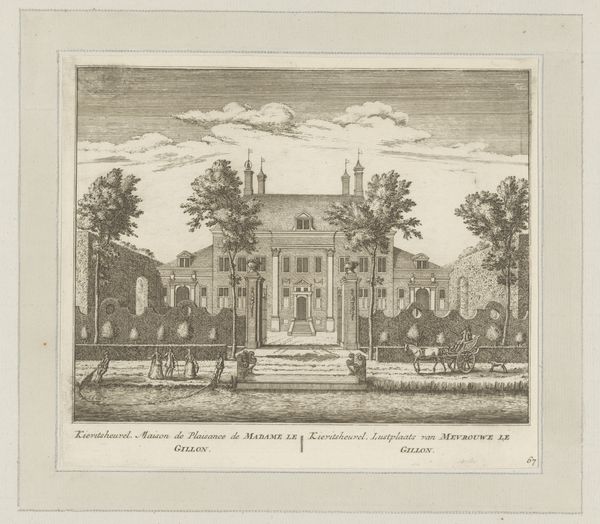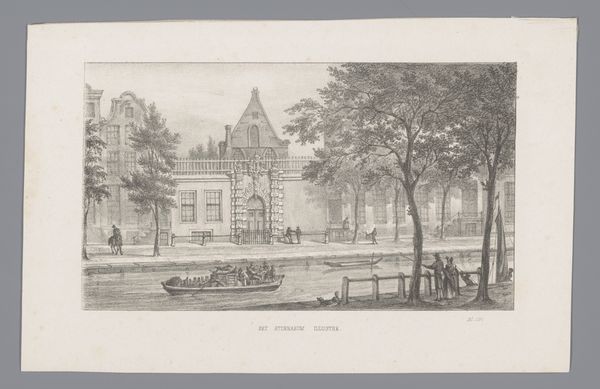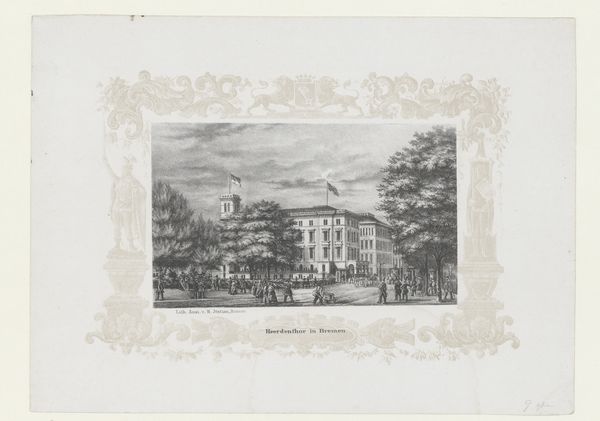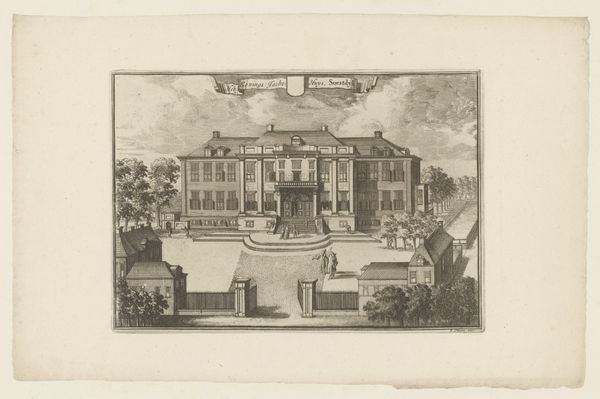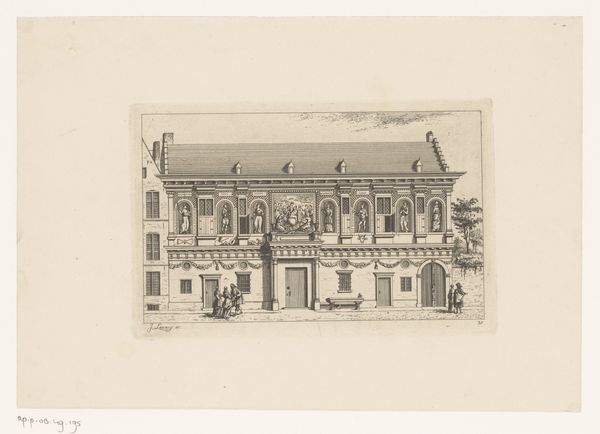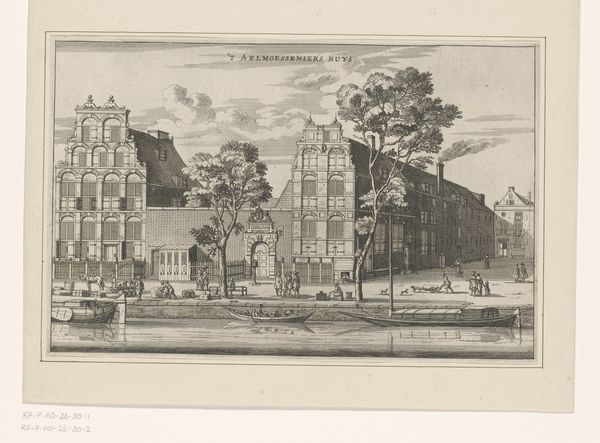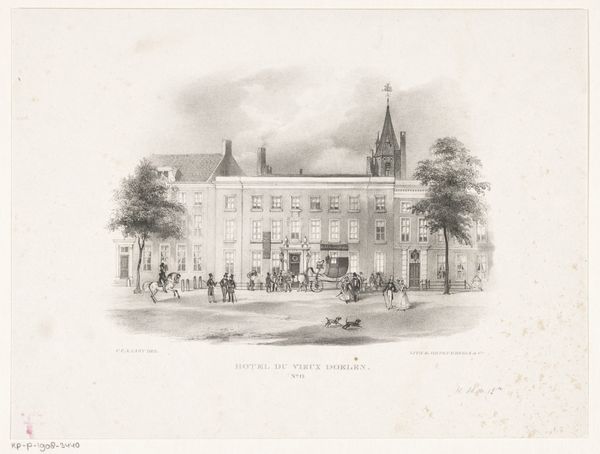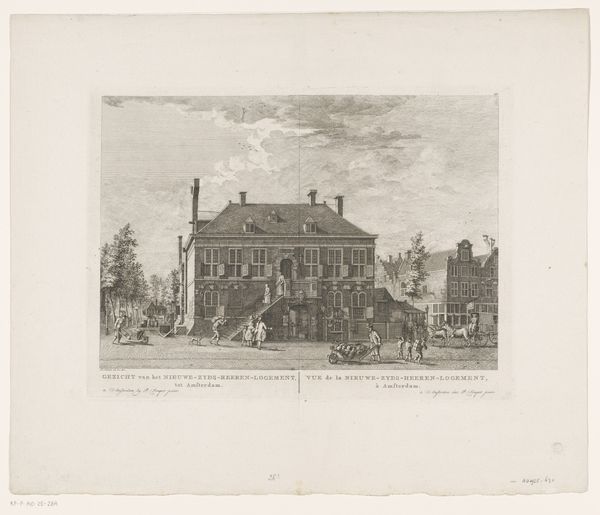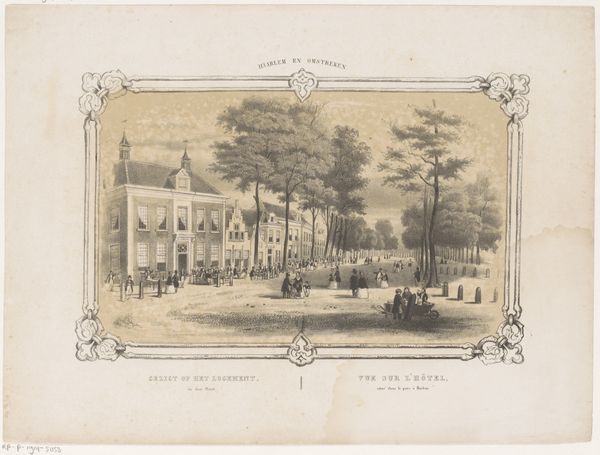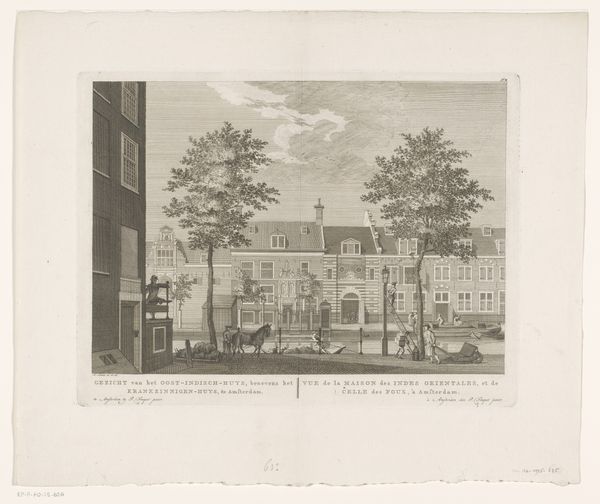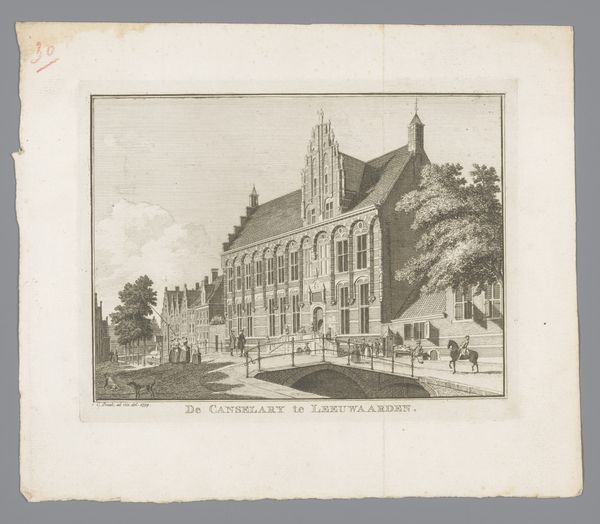
Dimensions: height 245 mm, width 300 mm
Copyright: Rijks Museum: Open Domain
Editor: Here we have "View of the rear of Schoonoord country house in Rijswijk," an etching by Petrus Josephus Lutgers, created in 1855. It's a bustling scene, isn’t it? It feels like a snapshot of a vibrant, privileged life, frozen in time. What do you see in this image that I might be missing? Curator: Well, what immediately strikes me is how this seemingly idyllic image reinforces specific social hierarchies. We're presented with a scene of leisure, yes, but who had access to such leisure? And how was that leisure sustained? Consider the political context of 1855 in the Netherlands - this imagery projects an ideal of bourgeois domesticity. What public message do you think this artwork conveyed at the time, or perhaps was designed to convey? Editor: So it’s not just a pleasant scene, but also a statement about social class? It makes me wonder who the intended audience was, and how they would have interpreted this “backstage” view of the estate, considering most estate depictions at the time show a manicured, clean entrance of these estates? Curator: Precisely. These images often functioned as status symbols. Printmaking made art accessible to a wider audience, shaping perceptions of class and societal roles. What's fascinating is how the *back* of the house almost welcomes, almost insists, that we enter. Where is our eye drawn to first? Editor: I think, for me, my eye goes straight to the group of children playing. Which makes it seem more familial, welcoming as you mentioned. Considering what you've said about the societal role of the image and how class structure is displayed. What would have been Lutger's incentive to portray this image in that context? Curator: Perhaps he was interested in exploring the evolving role of the bourgeoisie, emphasizing their commitment to family and their vision of a well-ordered society. It speaks to how the social institutions affect imagery of family life, doesn’t it? Editor: Definitely food for thought. I'll certainly look at images of everyday life from this period with a more critical eye from now on.
Comments
No comments
Be the first to comment and join the conversation on the ultimate creative platform.
